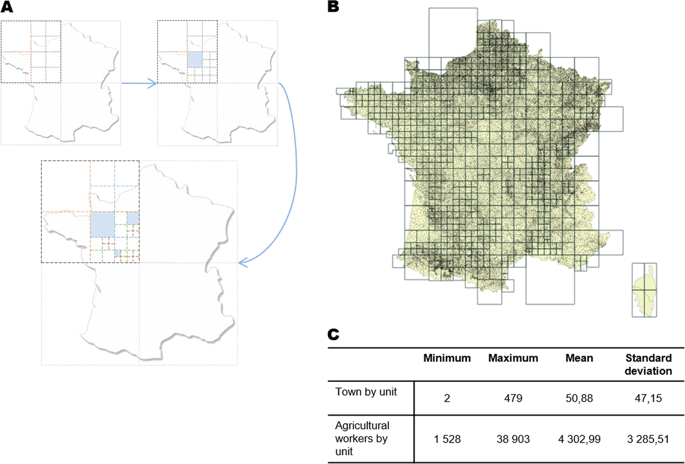Journal of Exposure Science and Environmental Epidemiology ( IF 4.5 ) Pub Date : 2019-09-04 , DOI: 10.1038/s41370-019-0166-x Pauline Achard 1 , Charlotte Maugard 1 , Christophe Cancé 2 , Johan Spinosi 3, 4 , Damien Ozenfant 5 , Anne Maître 1 , Delphine Bosson-Rieutort 1 , Vincent Bonneterre 1

|
This work is part of a global project aiming to use medico-administrative big data from the whole French agricultural population (~3 millions), collected through their mandatory health insurance system (Mutualité Sociale Agricole), to highlight associations between chronic diseases and agricultural activities. At the request of the French Agency for Food, Environmental and Occupational Health & Safety (ANSES), our objective was to estimate which pesticides were probably used by each agricultural worker, in order to include this information in our analyses and search for association with diseases. We selected five databases to achieve this objective: the Graphical Land Parcel Registration (RPG), the French Agricultural Census, “Cultivation Practice” surveys from the Agriculture ministry, the MATPHYTO crop-exposure matrix and the Compilation of Phytosanitary Indexes from the French Public Health Agency. A geographical grid was designed to use geographical location while maintaining worker anonymity, dividing France into square tracts of variable surface each containing a minimum of 1500 agricultural workers. We developed an automated algorithm to predict each individual potential exposure by crossing her/his occupational activity, the geographical grid and the RPG to deduce cultivation practices and use it as a gateway to estimate pesticides use. This approach allowed drawing, from administrative data, a list of substances potentially used by each agricultural worker throughout France. Results of the algorithm are illustrated at collective level (descriptive statistics for the whole population), as well as at individual level (some workers taken as examples). The generalization of this method in other national contexts is discussed. By linking this information with the health insurance databases, this approach could contribute to the agricultural workers health surveillance.
中文翻译:

药物管理数据与农业实践数据相结合,以回顾性估算农业工人的农药使用情况。
这项工作是一项全球项目的一部分,该项目旨在使用通过其强制性医疗保险系统(MutualitéSociale Agricole)收集的来自整个法国农业人口(约300万)的医疗行政大数据,以突出慢性病与农业活动之间的关联。应法国食品,环境与职业健康与安全局(ANSES)的要求,我们的目标是估算每个农业工人可能使用的农药,以便在我们的分析中包括此信息并寻找与疾病的关联性。 。我们选择了五个数据库来实现这一目标:土地图形注册(RPG),法国农业普查,农业部的“耕种实践”调查,法国公共卫生局的MATPHYTO作物暴露矩阵和植物检疫指标汇编。地理网格旨在在保持工人匿名的同时使用地理位置,将法国划分为不同面积的方阵,每个方阵至少包含1500名农业工人。我们开发了一种自动算法,可以通过交叉每个人的职业活动,地理网格和RPG来预测每个人的潜在暴露情况,以推导耕作方法并将其用作估算农药使用量的途径。这种方法可以从行政数据中得出整个法国每个农业工人可能使用的物质清单。该算法的结果在集体级别上进行了说明(整个人群的描述性统计数据),以及个人层面(以一些工人为例)。讨论了该方法在其他国家/地区中的推广。通过将此信息与健康保险数据库链接,此方法可有助于农业工人的健康监测。


























 京公网安备 11010802027423号
京公网安备 11010802027423号